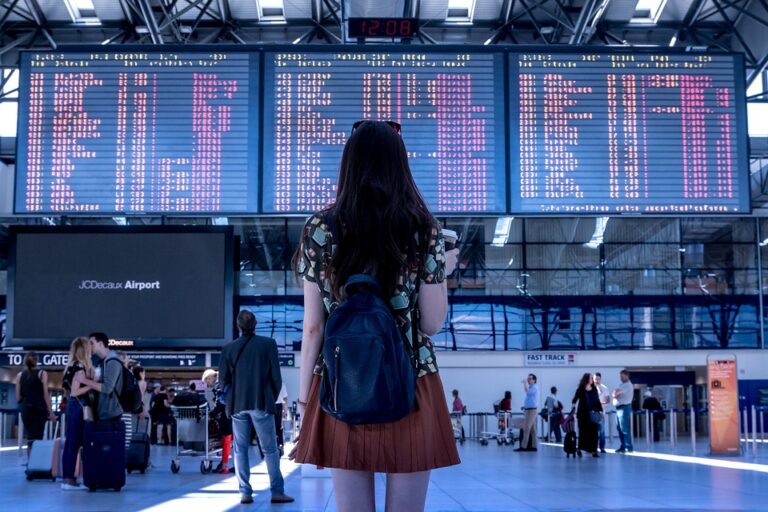The World’s 10 Busiest Airports: A Look at Air Travel Hubs
Air travel continues to soar, with more people flying than ever before. Whether for business or leisure, airports play a crucial role as the gateways to the skies. Among these, a select few have earned the title of the top airports in the world, serving millions of passengers each year. This article provides an in-depth look at the world’s ten busiest airports, examining their significance as key air travel hubs.
H1: Introduction to the World’s Busiest Airports
As air travel expands globally, understanding the key hubs that facilitate this growth is essential for travelers and industry professionals alike. The top airports not only manage passenger traffic but also influence international trade and tourism. According to the International Air Transport Association (IATA), global air travel is set to grow by 3-4% annually over the next decade, underscoring the importance of efficient airport operations.
H2: 1. Hartsfield-Jackson Atlanta International Airport (ATL)
With over 107 million passengers in 2019, Hartsfield-Jackson Atlanta International Airport (ATL) retains its title as the busiest airport in the world. Located in Atlanta, Georgia, it serves as a major hub for Delta Air Lines. The airport’s strategic position makes it an ideal transfer point for domestic and international flights.
Fun Fact: ATL has been the world’s busiest airport for over 20 consecutive years.
H2: 2. Beijing Capital International Airport (PEK)
As China’s primary air travel hub, Beijing Capital International Airport (PEK) had nearly 100 million passengers in 2019. Its proximity to the political and cultural center of Beijing attracts both business and tourism traffic, making it a vital component of China’s aviation landscape.
H2: 3. Los Angeles International Airport (LAX)
Los Angeles International Airport (LAX) serves approximately 88 million travelers yearly, connecting passengers to destinations around the world. Not only is it a primary gateway to the United States, but it also serves as a significant international hub, particularly for flights to Asia.
H2: 4. Dubai International Airport (DXB)
Dubai International Airport (DXB) is renowned for its luxurious amenities and efficient operations. In 2019, DXB served more than 86 million passengers, largely due to its position as a major transit point between East and West. Furthermore, the airport has become synonymous with high-end shopping and exquisite dining options, enhancing the travel experience.
H2: 5. Tokyo Haneda Airport (HND)
Tokyo Haneda Airport (HND) ranks as the fifth-busiest airport globally, with about 87 million passengers. Its proximity to downtown Tokyo makes it a preferred choice for international travelers. Interestingly, it has also been recognized for its punctuality, consistently ranking high in on-time performance statistics.
H2: 6. London Heathrow Airport (LHR)
Standing as Europe’s busiest airport, London Heathrow (LHR) serves approximately 80 million passengers annually. This airport is crucial for transatlantic flights and interconnected services to Africa, Asia, and the Americas, making it an essential hub for global travel.
H2: 7. Shanghai Pudong International Airport (PVG)
Shanghai Pudong International Airport (PVG) continues to expand its footprint in the aviation sector with over 76 million passengers in 2019. It is strategically positioned to serve the growing demand for air transport in China and connects passengers to numerous international destinations.
H2: 8. Charles de Gaulle Airport (CDG)
Paris’s Charles de Gaulle Airport (CDG) is a key international gateway, serving around 76 million passengers. It acts as a hub for Air France and connects Europe with destinations across the globe. The airport’s architectural elegance also adds to the allure of air travel in France.
H2: 9. Dallas/Fort Worth International Airport (DFW)
Dallas/Fort Worth International Airport (DFW) is a significant air travel hub in the United States, accommodating approximately 75 million passengers. Its strategic location allows easy access to various regions in North America, reinforcing its status as a critical connector.
H2: 10. Denver International Airport (DEN)
Rounding out our list, Denver International Airport (DEN) serves around 69 million passengers each year. Its expansive facilities and unique design set it apart, while its location makes it a hub for flights across the Rocky Mountain region and beyond.
H3: The Future of Air Travel Hubs
As we look to the future, the top airports will need to adapt to new challenges, including sustainability, technological advancements, and enhanced passenger experience. As the industry rebounds post-pandemic, airports must embrace innovations like automated baggage handling and advanced security measures to streamline operations.
Conclusion
The world’s busiest airports are not just transit points; they are thriving global hubs that impact economies, cultures, and travel experiences. As air travel continues to grow, these top airports will remain pivotal in connecting the world.
Internal Links:
External Links:

Alt Text: Hartsfield-Jackson Atlanta International Airport, one of the top airports in the world.

Alt Text: Luxurious amenities at Dubai International Airport, a leading air travel hub.
With the latest industry trends and statistics at hand, travelers and aviation enthusiasts can gain a deeper understanding of why these top airports dominate the air travel landscape.


